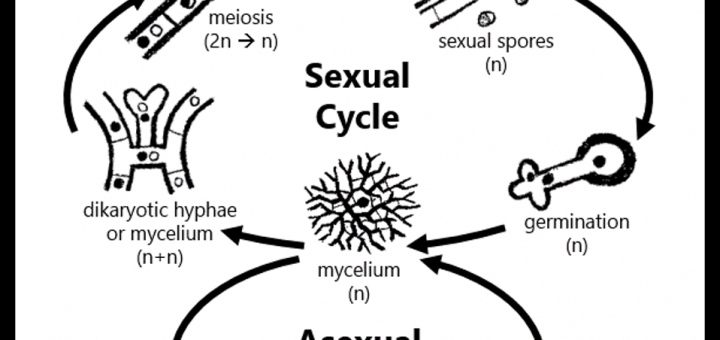#016: Characteristics of the Defunct Phylum Zygomycota
It has recently been demonstrated that the four subphyla historically classified as zygomycota do not make up a monophyletic group. As a result, the phylum zygomycota is no longer used. However, it has not yet been replaced by other phyla. The terms “zygomycota” and “zygomycetes” are therefore only used informally to reference this diverse group of fungi. The distinctive characteristic of the zygomycetes is their method of sexual reproduction (if a sexual stage exists). Their hyphae are almost always haploid. When two compatible (and haploid) hyphae meet they form gametangia, which fuse and become diploid. However, the diploid hypha is immediately isolated from the rest of the fungus. This isolated hypha then undergoes meiosis and develops into one zygospore. The zygospore is usually thick-walled and undergoes an obligatory period of dormancy before it germinates. This helps the spore survive for a long time in adverse conditions. Zygos also tend to...








![#011: Characteristics of Kingdom Fungi [Archived]](https://www.fungusfactfriday.com/wp-content/themes/hueman/assets/front/img/thumb-small-empty.png)
